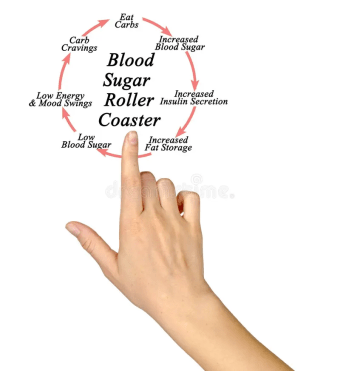Blood Sugar:
Our Need For Glucose is a Slow Drip, Not a Flood!
Nancy Mehlert, MS, Nutrition Expert at The Woodlands Institute for Health and Wellness

When early humans hunted, gathered, and raised their own food sources, the diet was naturally balanced with healthy fats, protein, fiber, and carbohydrates. Stable blood sugar was almost a given and is our ideal state. When your blood sugar is stable, you are alert, focused, and able to function optimally. Normally it would also mean you are maintaining a normal weight. Blood sugar stability means that the body is getting adequate resources of glucose from the diet or back-up storage in the liver, and is sustaining a balance of glucose to total blood volume. Stability means your sugar is not too high (hyperglycemia) or too low (hypoglycemia).
Glucose primarily comes from the carbohydrates we eat. Carbohydrates include all grains, sugars, fruits, and vegetables. The more fiber a carbohydrate has, the slower it digests. The less fiber it has, the faster it digests. Nuts and seeds, meat, eggs, and animal fats are not significant sources of carbohydrate. Any pulverized (made into flour) grain or bean, all natural sugars, and the lowest fiber fruits, eaten independently of fat or protein, will digest VERY rapidly, dumping glucose into the blood all at once. Glucose makes its way to the blood stream BOTH through the intestines as well as sublingually, under the tongue. Our approximate one gallon of blood in the human body is optimally balanced with glucose when there are about 4 grams of glucose mixed in our blood. Therefore, when we eat predominantly carbohydrate foods such as wheat, rice, or corn based breads and pastas, or drink any liquid with carbohydrate content (soft drinks, energy drinks, fruit juices) especially with no sources of significant fat, fiber, or protein, we destabilize blood sugar by 5, 10, or even 20 times more than our optimal state.
Our body stabilizes elevated blood glucose levels by releasing insulin. Insulin is a hormone that ushers glucose from the blood stream first into the liver. The liver, however, has a limited capacity for glucose, so once that capacity is reached, excess glucose is usually stored as fat. Thus when we consistently consume excess glucose (i.e. carbohydrates), we gain weight. Moreover, inflammation occurs which results in other diseases such as a fatty liver, diabetes, bone deterioration, heart disease, cancer, or poor brain function. Insulin usually is an overachiever when removing glucose from the blood, taking blood sugar a bit below normal. The result is a desire or craving for more carbohydrates to level out blood sugar, but usually results in our consumption of too much again. This vicious sugar craving cycle of spiking and dumping blood sugar ultimately leads to metabolic disfunction, damage, and disease.
The goal in developing a healthy nutritional lifestyle is to determine the methods that effectively deliver a slow and low glucose drip into the bloodstream, rather than flooding it with more glucose than it can use at that moment. Next week, we will offer a new approach to doing just that. Stay tuned.

